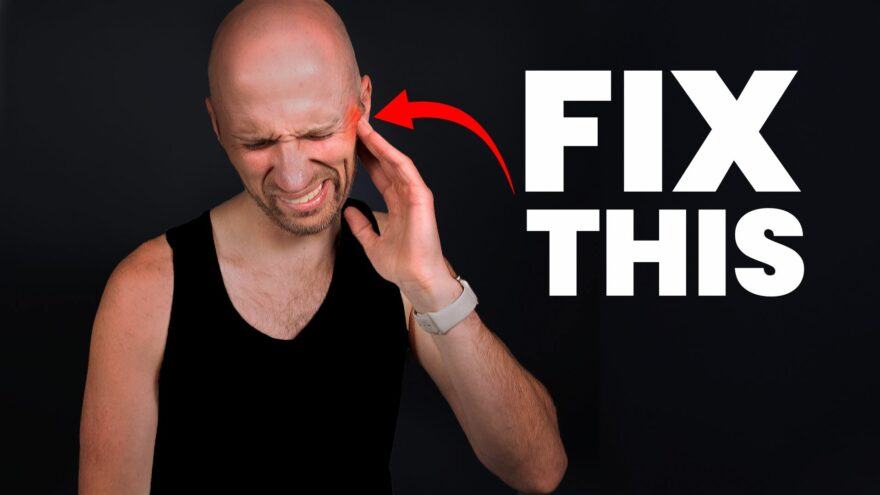Table of Contents
Keys To Helping Your Jaw Feel Better
Jaw pain, tightness, or discomfort can have a major impact on your life. Especially if you clench or grind, or it hurts to chew.
This post will show you 3 moves that help A TON of my clients with jaw pain. Get ready for improved jaw biomechanics and comfort.
Jaw Mechanics 101
Want your jaw to feel better? You need to know what normal is.
Ideally, the jaw should move down and forward when opened. Issues arise when the jaw rests in a back and upward position. This position reduces space in the temporomandibular joint (TMJ). Less space = OUCH.
Here are some moves that can restore that.
Step 1: Jaw Rotation
The first exercise helps promote the natural rotation that occurs in the jaw when you chew.
Chew gum or a tube on one side of your teeth. On the opposite side, apply pressure to the big muscle on the side of your jaw. It’s called the massater.
You can enhance the effect by using Mastic gum, which increases resistance.
Step 2: Tongue and jaw Differentiation
The second exercise helps the tongue and jaw move independently. If your jaw deviates to one side when opened, this exercise rocks!
Basically, you’ll press your jaw in 1 direction. Keeping pressure, move your tongue in the opposite direction.
Step 3: More Space
The final exercise uses the tongue to open up TMJ space.
Try this:
- Pointing your tongue straight out
- Press it against the top teeth.
- Slide it back to suction onto the roof of the mouth.
- Keeping the tongue in this position, slowly open and close your mouth.
Sum up
By incorporating these three simple exercises, your jaw pain can improve like MEGA.
Now if you struggle with the tongue stuff, this post has some moves that focus solely on that.
FAQ
1. How often should I perform these jaw exercises?
Try each exercise 2 times per day. 10 reps or 30 seconds.
2. Can these exercises help with teeth grinding?
Yes. Less jaw tension = less grinding
3. Are there any risks involved with these exercises?
These exercises are safe, but be gentle at the start. Consult a professional if you have severe pain or TMJ disorders.
4. How long does it take to see results from these exercises?
Some individuals may notice improvements in one session. While for others, it may take consistent practice over a few weeks.
5. Can I do these exercises if I have TMJ disorder?
While these exercises are beneficial, it’s always best to consult with a healthcare professional before starting any new exercise regimen, especially if you have existing TMJ disorders.
6. Is mastic gum necessary for these exercises?
While mast gum can enhance the resistance in the exercises, it’s not mandatory. Regular chewing gum or a simple tube can also be effective.

